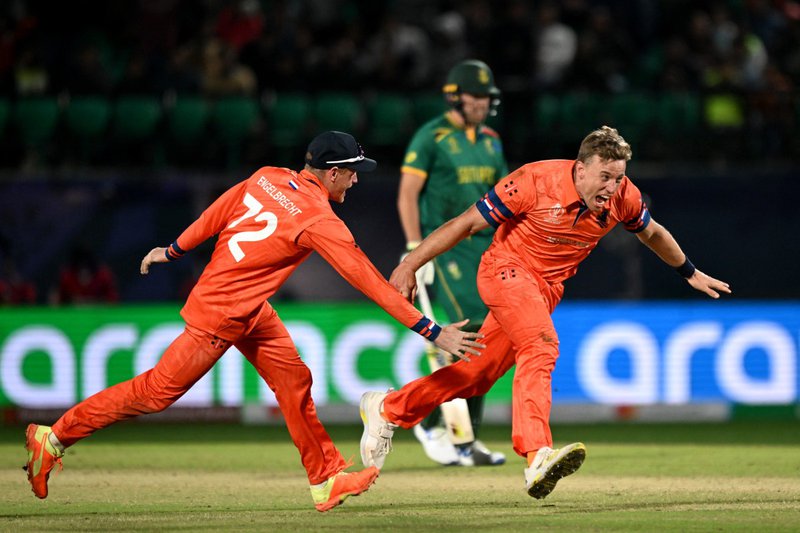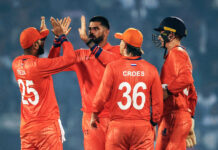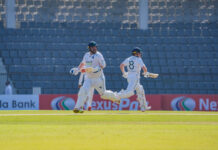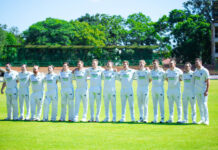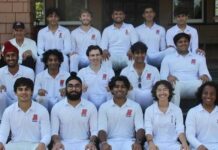The regrettable, arguably scandalous decision of the ICC to abandon the Super League means that the Netherlands, like other leading Associates, will spend the next three or four years mostly playing their ODIs against one another in League 2.
It may be, of course, that the hopes recently raised by national coach Ryan Cook will come to fruition, and that this still-to-be-announced programme of matches against Canada, Namibia, Nepal, Oman, Scotland, the UAE and the USA will be augmented by some ODIs against Full Members, although given the traditional reluctance of the latter to agree to such matches, it would be unwise to hold’s one breath.
And given that ten of the 14 places in the 2027 World Cup will be determined on the ICC’s rankings system and that even victories over South Africa and Bangladesh have left the Dutch in 14th place in that system, without an opportunity to beat teams above them their route to that tournament will almost certainly be through the 2026 Qualifier.
So doing well in League 2 will inevitably be a priority in the next few years, as will building on the side’s successes so far and ensuring that the squad which is playing in 2026-27 is at least as strong as that which took part in India.
As Scott Edwards likes to point out that is still a young team, with three 20-year-olds and the 23-year-old Bas de Leede, all of whom can be expected to grow further into their roles away from the pressure-cooker environment of the World Cup.
At the other end of the scale, Wesley Barresi is 39 and Roelof van der Merwe 38, and it would be surprising if they were still in the mix in three or four years’ time; equally, pacemen Logan van Beek, Fred Klaassen and Paul van Meekeren have all entered their thirties, and developing a younger brigade of quick bowlers will doubtless be one of the priorities for the Dutch coaching team.
It has to be acknowledged, though, that conditions in the Netherlands are far from conducive to the emergence of serious pace: both the turf wickets and the artiificial astroturf pitches tend to be slow and low, and it is significant that whereas in the days of coir matting the clubs often hired genuinely quick bowlers, these days they tend to prefer professionals who can extract maximum benefit from slower-paced wickets.
This means, in turn, that Dutch-produced batters largely have little experience of real pace, as we saw repeatedly during the Super League and the World Cup.
It follows from this that ways need to be found (perhaps through A-team tours, a hobby-horse of mine, I know) of exposing emerging Dutch players to the quickest bowling on supportive wickets, as well as to the mysteries of high-quality spin.
Equally, it is a hard fact that the internal Pro Series is both a better guide to form and a better preparation for international cricket than the Topklasse, the top domestic competition which includes too many teams and therefore does not provide the leading players with sufficiently testing, high-pressure cricket on a regular basis.
Surviving in vestigial form since Scotland decided to pull out of the North Sea Pro Series and develop their own, much more effective regional competition, the Dutch Pro Series needs a thorough, properly-funded revamp, which would also help to underpin any remaining ambition to move quickly to Full Member status within the ICC.
That, though, is a classic chicken-and-egg conundrum: the additional funding which would presumably come with Full membership is actually needed now, in order to create the infrastructure which is required in order to satisfy the criteria for eligibility for that membership.
It’s a dilemma which the dominant voices in the ICC either don’t understand, or don’t care about.
Back, however, to the on-field prospects for the next four years.
So far we have only discussed 50-over cricket, assuming that the chorus of complaint about the ODI format has failed to persuade the ICC Board to pull the plug on the one-day game.
The most pressing priority for Cook, Edwards and their team as they come down from the high of the 50-over World Cup, however, is its T20 counterpart, for which they so dramatically qualified by beating Zimbabwe and South Africa a year ago.
Preparing for that tournament, scheduled for the Caribbean and the USA next June, will no doubt have a big influence on the team’s programme over the winter and the first month or so of the European summer, and given that it’s a major ICC event one would hope that despite the fact that it falls in the middle of the English season Cook will be able to call on all his county-contracted players.
In that case one might expect the squad to be largely unchanged from that which performed so creditably in India, although there might be some adjustments in the light of the specific demands of the shorter format.
In a longer perspective, moreover, the next such event, in India (surprise, surprise!) and Sri Lanka in 2026, will only be two years away, with qualification either through a top-eight result in the West Indies or a European qualifier from which two spots will be available in the expanded 20-team tournament.
We hear a great deal about the volume of cricket with which the Full Members and their players are struggling to deal, but in the twilight zone inhabited by the leading Associates, where there is never enough money and largely part-time cricketers are trying to live like and perform at the same level as their full-time rivals, the pressures are different but no less demanding.
It is in the light of these considerations that we should judge what the Dutch have achieved, and understand what they will be striving to achieve in the years ahead.
You’re reading Emerging Cricket — brought to you by a passionate group of volunteers with a vision for cricket to be a truly global sport, and a mission to inspire passion to grow the game.
Be sure to check out our homepage for all the latest news, please subscribe for regular updates, and follow EC on Twitter, Facebook, LinkedIn and YouTube.
Don’t know where to start? Check out our features list, country profiles, and subscribe to our podcast. Support us from US$2 a month — and get exclusive benefits, by becoming an EC Patron.

